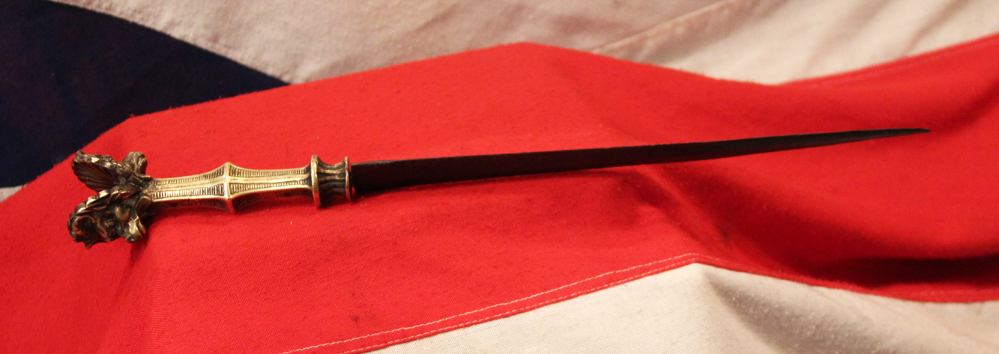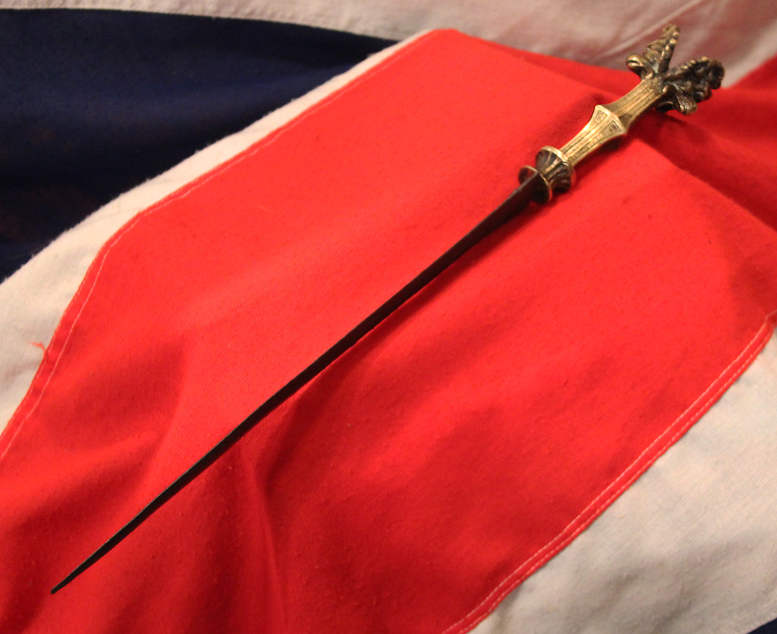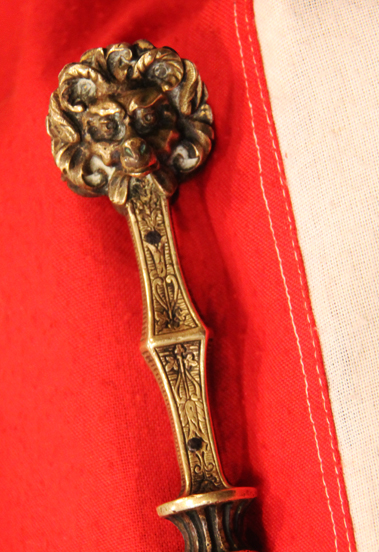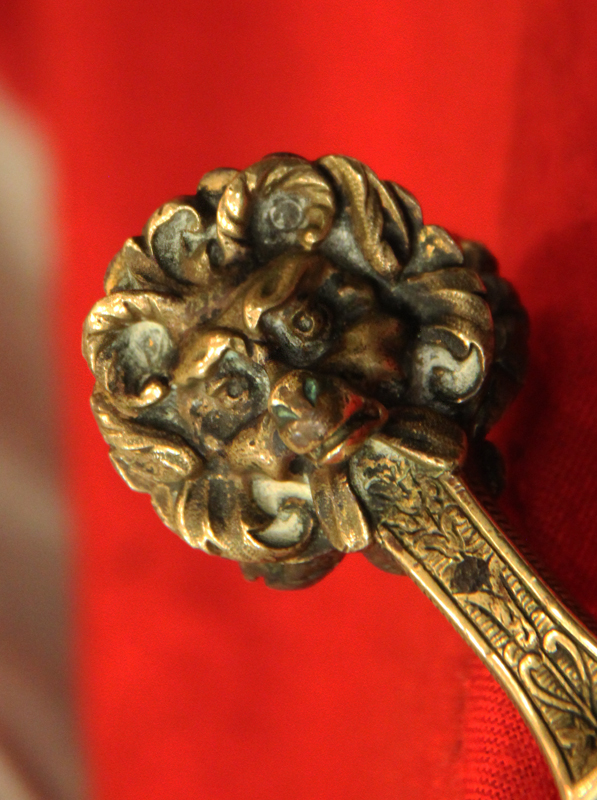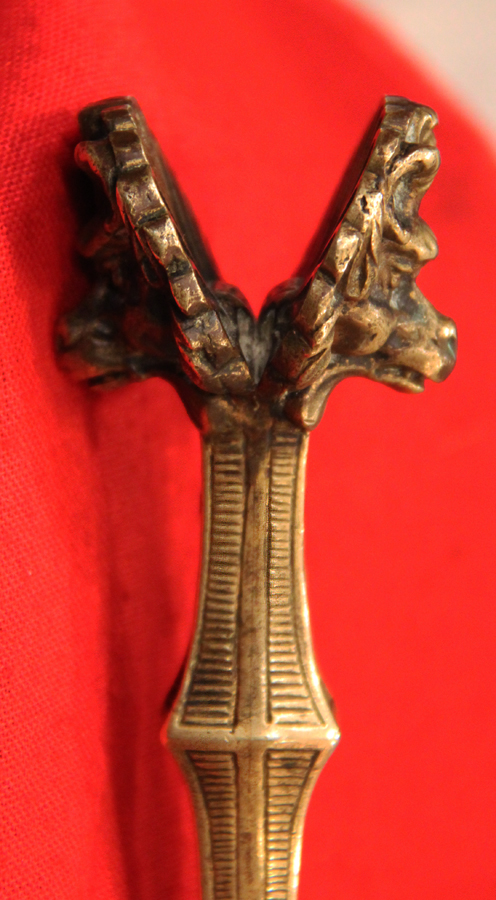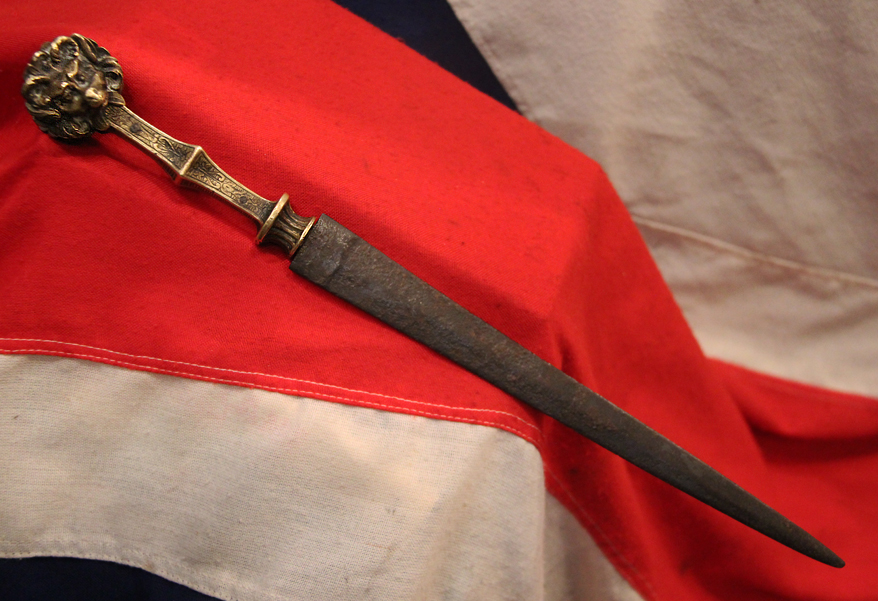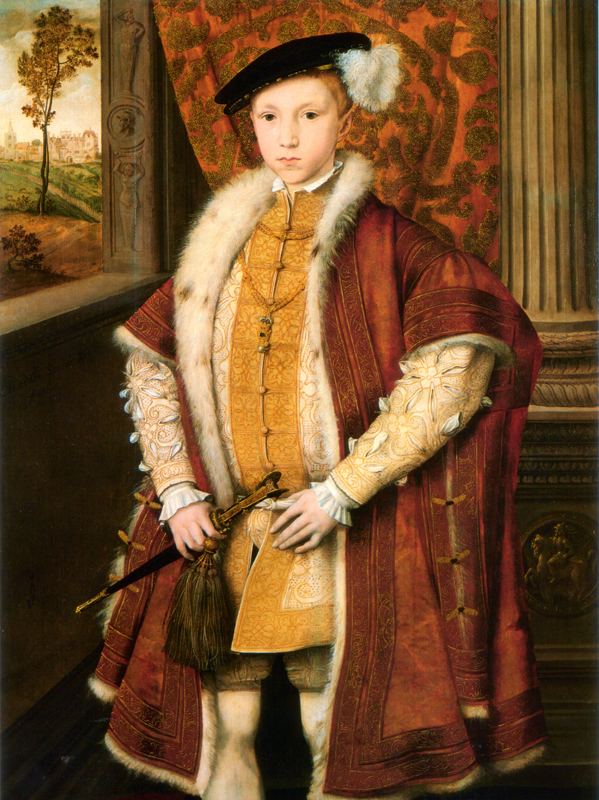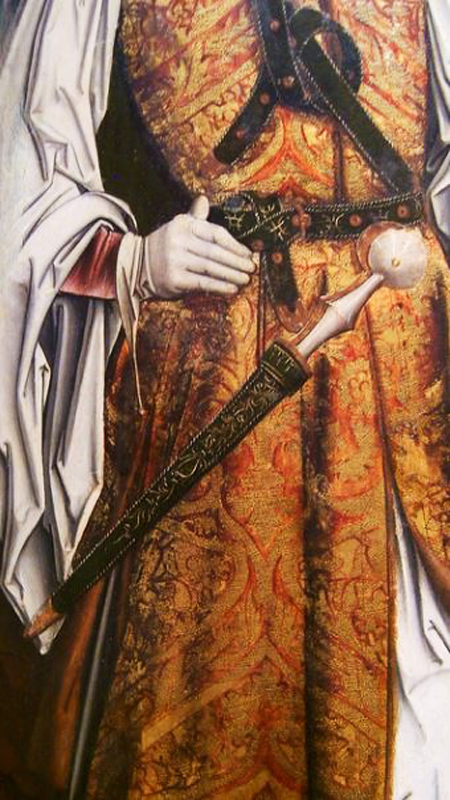A Truly Exceptional & Rare Original 16th Century Italian Renaissance Sfondagiaco Eared Dagger, Named From The Protruding Twin ‘Ears’ of the Pommel Shaped As Stunning Masked Horned Goats.
An original and rare dagger used by Princes, Dukes and Kings, capable of perforating chainmail and sliding between metal armour plates.
An exceptionally rare and important so called 'Ear Pommel Dagger', from 16th century Venice, Italy. With a traditional form brass hilt, of twin plates double rivetted through the blade tang, finely engraved, with a pair of ear pommels, in the form of two simply stunning full relief masks of horned goats, backed with clam shell decoration. Double edged graduating blade.
What has been described the most valuable dagger in the world was another, most similar 'Ear Form Pommel Dagger', from the same era of the 15th century.
It was from the Nasrid dynasty in Spain and it sold in Sotheby's Auction house nine years ago for an incredible $6 million dollars. However that example was decorated with Islamic decoration in gold. Ear Daggers are considered the most important contribution to the Nasrid panoply of arms and armour. Ear Daggers probably originated from North Africa, although ancient Asiatic versions existed from 1200 bc. They were used in Spain during the 15th and 16th centuries, and also introduced to Italy and Christian Europe in the 15th century. Daggers of this type were once extremely fashionable among great and powerful nobles, princes and kings, and there exists a portrait of the young King Edward VI of England, now in the Royal Collection at Windsor Castle, clutching an Ear Dagger at his waist. Deriving its name from the striking design of the hilt pommel, the Ear Dagger (dague oreilles in French and alla Levantina in Italian) comprises two flattened, embossed or conical discs which resemble ears, issuing from either side of the grip a.
Only a handful of comparable examples of the Nasrid daggers exist, and mainly in museum collections.
Original 15th century ear daggers are only generally to be found in the finest national museums such as the Louvre, the British Royal Collection, the Metropolitan Museum, Fifteenth-century Italy was unlike any other place in Europe. It was divided into independent city-states, each with a different form of government. Florence, where the Italian Renaissance began, was an independent republic. It was also a banking and commercial capital and, after London and Constantinople, the third-largest city in Europe. Wealthy Florentines flaunted their money and power by becoming patrons, or supporters, of artists and intellectuals. In this way, the city became the cultural centre of Europe, and of the Renaissance. Italian Wars, (1494-1559) series of violent wars for control of Italy. Fought largely by France and Spain but involving much of Europe, they resulted in the Spanish Habsburgs dominating Italy and shifted power from Italy to north-western Europe.
The wars began with the invasion of Italy by the French king Charles VIII in 1494. He took Naples, but an alliance between Maximilian I, Spain, and the pope drove him out of Italy. In 1499 Louis XII invaded Italy and took Milan, Genoa, and Naples, but he was driven out of Naples in 1503 by Spain under Ferdinand V. Pope Julius II organized the League of Cambrai (1508) to attack Venice, then organized the Holy League (1511) to drive Louis out of Milan. In 1515 Francis I was victorious at the Battle of Marignano, and in 1516 a peace was concluded by which France held onto Milan and Spain kept Naples. Fighting began in 1521 between Emperor Charles V and Francis I. Francis was captured and forced to sign the Treaty of Madrid (1526), by which he renounced all claims in Italy, but, once freed, he repudiated the treaty and formed a new alliance with Henry VIII of England, Pope Clement VII, Venice, and Florence. Charles sacked Rome in 1527 and forced the pope to come to terms, and Francis gave up all claims to Italy in the Treaty of Cambrai (1529). By the Peace of Cateau-Cambr?sis (1559), the wars finally ended. 16 inches long overall, blade 11 inches.
Code: 22159
9975.00 GBP


